We use cookies to ensure that we give you the best experience on our website. If you continue without changing your settings, we will assume that you are happy to receive all cookies on the Business Car website. However, if you would like to, you can change your cookies at any time

The start point for the best source of fleet information |
Final report: Suzuki S-Cross long-term test
Date: 25 November 2022 | Author: Sean Keywood
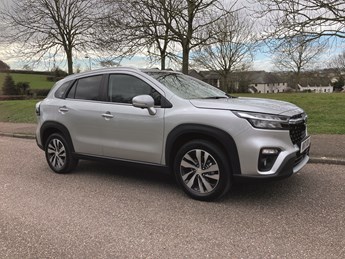
|
|
||||||||||||
Final Report: Passing grade
Since starting at Business Car, I've run long-termers ranging from the brilliant (Ford Puma) to the highly flawed (Renault Koleos), and from the stylish and dynamic (Mazda3) to the dull (Vauxhall Grandland X). Now, with the departure of my latest vehicle after seven months and more than 6,000 miles in my care, I can report that the Suzuki S-Cross comes somewhere in the middle. It did everything I could reasonably ask of it well enough, without ever really wowing me or leaving me desperate to rush out and recommend one to all my friends and family.
That might seem a slightly harsh verdict, since as noted during the course of my time with the car, there were plenty of features that I liked. Its adaptive cruise control system was a welcome reducer of motorway stress (although the distance resetting every journey was annoying), while the Apple Carplay functionality was well integrated. Also, passengers praised the panoramic sunroof, which is quite a good example of the feature even though I'm not a fan generally. Fuel economy is also worth a mention, as although the S-Cross is only a mild hybrid, and so can't hope to compete with full or plug-in hybrid rivals for savings at the pumps, I was at least able to beat the official WLTP figure during my time with the car. That mild hybrid powertrain with its torque-boosting function did at least make the S-Cross feel decently nippy around town for an SUV, something that could also be said about the handling. Having had the car mostly during the summer months, I didn't have much call for the four-wheel drive system, but this performed fine when called upon.
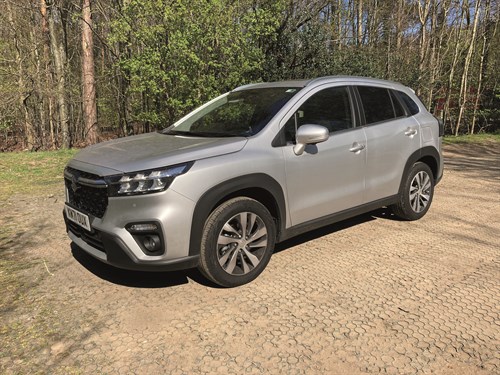
Also - a late discovery - I liked the way the driver's side front floor mat has a proper locking mechanism to keep it in place, rather than just popping in and out like with most cars, adding an extra level of security in avoiding it coming loose and interfering with pedal operations.
In addition, it's certainly worth noting that over the course of my time with the car there were absolutely no reliability problems or even minor glitches to report, so a big plus mark for dependability.
On the negative side, passengers noted some interior quibbles, including the provision of only one USB port, and rear headroom being a bit tight for adults. Some scratchy interior plastics were also present despite our car being in range-topping Ultra spec, although the leather seats were comfortable and the level of standard equipment generally good.
On reflection then, the scoreboard has more good points then bad and I do look at the S-Cross as being a solid SUV choice, and potentially a good one if you need four-wheel drive. The problem if you don't, however, and the reason for my harshness, is that the family SUV segment is probably the most competitive in motoring these days, and with so many quality rivals, just being solid isn't really good enough to win acclaim.
It is worth noting, however, that Suzuki is about to introduce a full hybrid version of the S-Cross, which should perform better than our test car on fuel economy and CO2 emissions. If that model can retain the strengths of our car along with improved efficiency, it could prove to be an attractive option for fleets.
7th Report: How much does 4x4 equal?
Having written last month about our S-Cross's four-wheel drive system - a potential selling point given many modern SUVs are two-wheel drive only - I thought it was worth giving some other aspects of this further consideration. As previously noted, four-wheel drive is normally bad news for fuel consumption, but Suzuki argues that the S-Cross's mild hybrid system circumvents this. But does this stack up when we compare it against rivals on a running costs basis?
An added complication here is that although Suzuki says the S-Cross is a C-segment car, its size in reality places it at something of a halfway point between C and B segments, so we'll consider rivals from both.
The good news for the Suzuki is that, with the exception of budget brand Dacia's Duster, it undercuts all other comparable four-wheel drive SUVs in terms of P11D. This includes, from the B-segment, the Jeep Renegade, the Toyota Yaris Cross, and the Volkswagen T-Roc, and from the C-segment, the Honda CR-V, Hyundai Tucson, Jeep Compass, Kia Sportage, Mazda CX-30, Nissan Qashqai, Seat Ateca, Toyota Rav4, and Volkswagen Tiguan. It sounds good, but there's a complication here in that some of the above are plug-in hybrids, which although more expensive to buy, offer the potential for big savings on fuel bills. Cost-per-mile calculations based on official WLTP economy figures show that over three years/60,000 miles the B-segment Jeep Renegade and C-segment Hyundai Tucson and Kia Sportage PHEVs should cost 52.2p, 45p, and 43.1p respectively, compared with 53.1p for the S-Cross.
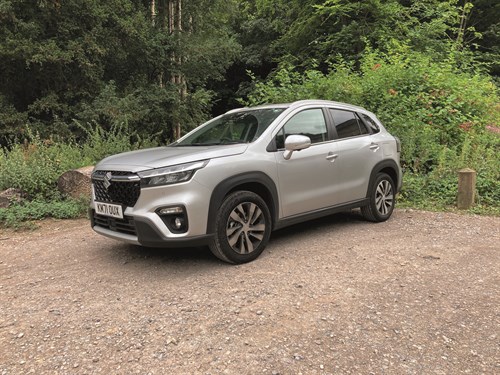
Of course, it can be argued that this is based on figures, which would be tough to match in real life, and therefore the Suzuki retains the advantage. But then we must also consider the B-segment Toyota Yaris Cross, with its conventional hybrid powertrain - also better for fuel than a mild hybrid, and with these savings easier to achieve in real life. Its therefore projected to cost just 49.8p per mile to run. The S-Cross is 120mm longer than the Yaris Cross, and its boot is 33 litres bigger, so it should have the edge on practicality - the question is whether it's one worth paying for.
And let's not forget the Dacia Duster we mentioned earlier. Similar to the S-Cross in falling between the B and C segments size-wise, its budget brand status is exemplified by some pretty utilitarian interior materials, but the level of equipment and the driving experience aren't bad, and the potential savings are colossal, coming in £9,000 cheaper on P11D, and 14p cheaper on cost-per-mile, with official fuel economy also
slightly better.
Overall then, the S-Cross is certainly one of the cheaper ways to have four-wheel drive for those who need it, but not the cheapest. However, opting for any of the alternatives means compromise, whether its risking missing ambitious official PHEV fuel economy figures, having to squeeze into a smaller car, or switching to an overt budget option. It's easy therefore to see the S-Cross winning favour among those in search of extra traction with their company motor.
And if you don't want four-wheel drive? Well, simply put, that opens up the S-Cross to the full gamut of rivals across the most competitive segments in motoring, and it becomes a lot more difficult for it to stand out. Also, a two-wheel drive S-Cross is only available with the lesser Motion equipment grade.
6th Report: Off the beaten track
Having mentioned it quite a lot when our S-Cross was first delivered back in March - due to the fact that, unlike many SUVs these days, it has four-wheel drive - I've barely referred to it since. So, with the car set to depart our fleet next month, I thought it was time to finally address the subject in more detail.
Our S-Cross, as a range-topping Ultra model, comes as standard with Suzuki's Allgrip four-wheel drive system, which features four selectable modes, controlled via a knob next to the gear lever. The default Auto mode keeps the car in front-wheel drive mode most of the time, with the aim of boosting fuel economy, but then engages four-wheel drive if it detects wheel spin. The other options are: Sport, said to make maximum use of the four-wheel drive system in accordance with accelerator inputs to improve performance; Snow, which deploys four-wheel drive by default to improve traction on slippery surfaces; and Lock, designed for extricating the car from a particularly sticky situation, with a limited-slip differential transferring torque to wheels, which have grip.
Now, in the past when I've written about four-wheel drive cars for Business Car, I've noted that while their complicated drivetrains often mean worse fuel economy and CO2 emissions than with two-wheel drive models, this could be a price worth paying for those driving in rural areas with changeable weather conditions during winter months. Unfortunately, this has been difficult to validate with our S-Cross during one of the driest summers on record. However, I have at least been able to try it on some loose-surfaced gravel farm tracks not too far from my home, and found the Allgrip system acquitted itself well, keeping things under control and moving forward in conditions where I suspect a two-wheel drive car might start to struggle.
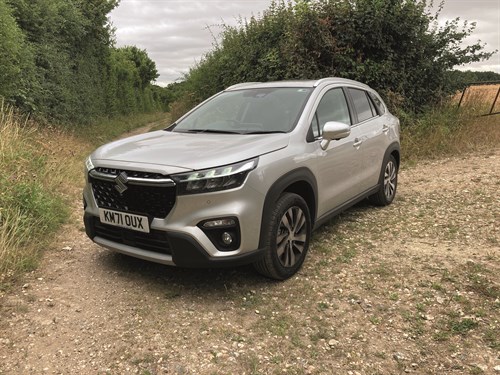
Suzuki does have a strong heritage with off-roaders, and when I've previously tried some of the manufacturers' other Allgrip models on proper off-road courses I've found them very capable, so while the S-Cross is more road-orientated than some of its siblings, there's no reason to assume it will struggle when wetter, muddier conditions eventually do arrive, certainly in comparison with similar cars from other brands.
As for the aforementioned Sport mode, well, that might seem a little incongruous with a car like the S-Cross, which could hardly be described as a hot hatchback. However, with this mode engaged the car does feel just a little bit better sorted on a twisty road - more balanced and feeling slightly less inclined towards understeer. It's still far from being a sports car, but the mode has proved itself not quite as irrelevant as I would have assumed previously.
And those fuel economy and CO2 emissions figures? Well, compared with a two-wheel drive S-Cross, these are worse under official testing by 5.4mpg and 13g/km respectively. Which is certainly enough to be worth bearing in mind from a fleet point of view. However, it should also be noted that with our test car, I am currently slightly bettering the official fuel economy figure, and with the S-Cross only having a few more weeks left on our fleet, it seems unlikely that situation will have changed by the time I come to my final verdict.
5th Report: The wisdom of crowds?
Having previously done most of my miles with our Suzuki S-Cross making solo trips to work-related events, there was a sudden spate recently of transporting family and friends. So, the question was, would they notice anything about our car that I'd previously overlooked? Well, quite a lot as it turned out, and to be honest it was mostly negative. In no particular order:
- USB ports: There is only one, as a friend was disappointed to discover when she found she couldn't charge her phone from the front passenger seat while I was using Apple Carplay. In 2022 this seems a pretty serious shortcoming on the S-Cross's part, especially given this sort of car will often be required for family use. The idea of several teenagers all having to fight over a single device charging port at best - and those sitting in the back needing a pretty long cable to do it anyway - seems a sure-fire recipe for family feuds.
- Rear middle seat belt: Instead of a permanent three-point arrangement, the belt must first be pulled down from the roof into a socket on the middle passenger's left, creating a three-point set-up that can then be plugged in conventionally on their right. If prepared in advance it wouldn't be a problem, but since I hadn't known about it, it was found a bit confusing by someone just wanting a short lift to dinner. Then, when recreating the process before writing this update, I could not work out how to unplug it all again without consulting the instruction manual.
- Rear seat ventilation: Specifically, there is none. Although the S-Cross comes with climate control as standard, there are no vents on the B-pillars, or on the back of the front centre armrest, or indeed anywhere you might find them for the comfort of rear-seat occupants. In fact, the most rearward-mounted vents in the car are the ones on the dashboard, which didn't go down well with a friend sat in the back on a warm evening drive.
- Rear seat storage: The rear door bins are not much bigger than cupholders, and for some reason there is only a pocket on the back of the front passenger's seat, not the driver's.
- Rear headroom: I had tried out sitting in the back seats myself previously, and as an average-sized bloke noticed no major problems in this department, although my hair did just brush the roof. But of course, that was while the car was stationary. As my brother (no taller than me) pointed out, there can be less vertical margin when driving, and on a bumpy road he found himself headbutting the roof lining. As for the slightly-raised middle seat, that is more significantly cramped for someone my height.
In fairness to the S-Cross, my brother's complaint is probably linked to the main point that passengers have raised about the car - its panoramic sunroof, and the way it allows a great deal of extra light (and indeed air, given the aforementioned lack of rear ventilation) into the cabin. Which is ironic since I generally dislike sunroofs for letting in excess heat on sunny days and providing distracting overhead light when driving - I normally just leave the cover closed and ignore it. You can't please everyone, I suppose.
4th Report: What's in a name?
The boot of our Suzuki S-Cross features a couple of potentially confusing badges. One reads SX4 - a name which is applied to the model in overseas markets, but isn't used by Suzuki in the UK. And the other reads Hybrid. With no qualifiers attached, this suggests the car might be a full hybrid, with an electric motor stepping in to drive the car periodically instead of the petrol engine - in the manner of Business Car's previous Suzuki long-termer, the Swace (closely based on the Toyota Corolla). In fact, the S-Cross is merely a mild hybrid, with a 48V system merely lending a hand to the petrol engine, rather than taking over and propelling the car outright. This therefore reduces the system's fuel and emissions-saving potential compared with a full hybrid. Suzuki isn't alone in this sort of questionable hybrid badging, but it doesn't put us in a particularly favourable mood for assessing the 48V system - what it does better be good.
In terms of saving fuel, therefore, it's disappointing to note that the mild hybrid system's functionality is actually fairly limited compared with some others of this type on the market. There is, for instance, no coasting function, where some manufacturers' systems allow a car's engine to switch off for brief periods when the driver lifts off the accelerator at a cruise. There is also no early deployment for the S-Cross's stop-start system - some manufacturers' mild hybrids are able to switch the engine off early, at around 10mph, when coming to a halt in order to save a bit more fuel. The only pure fuel-saving function of the S-Cross's system is what Suzuki calls electric motor idling. At speeds below 10mph, or when stationary, when the clutch is disengaged and engine revs are at around 1,000rpm, power from the motor effectively replaces the fuel injectors to keep the engine ticking over.
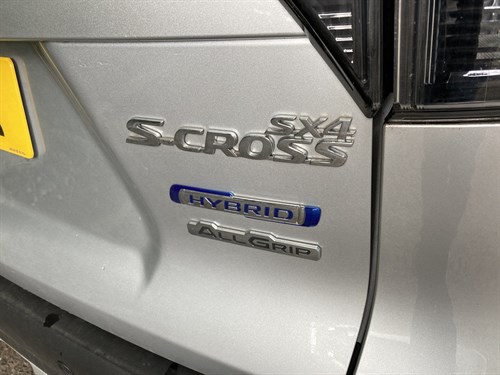
This sounds clever and, although it is not noticeable on the road, is presumably working well and unobtrusively on our test car - although the length of time during which the system might actually be called upon on a typical drive is clearly limited.
The main function of the mild hybrid system is torque boosting, where energy recovered when the car decelerates is redeployed to support the petrol engine when accelerating. As well as improving performance - and the S-Cross's mid-range acceleration is decent for a car of this type - this does technically improve efficiency, as it recovers energy that would otherwise be lost during the braking process. However, on this front it still can't hope to compete with full hybrid and plug-in hybrid systems with their much larger batteries.
In terms of fuel economy, our S-Cross's powertrain is so far meeting up to expectations, with our real-world figures a very slight improvement on those from official WLTP testing, and 48.2mpg is impressive for a petrol SUV with four-wheel drive. However, businesses should be under no illusions of the S-Cross offering any tangible step towards fleet electrification.
3rd Report: Long distance champion?
Based on my diary, the automotive world seems to be very much back to business as usual following the Covid-19 pandemic. Certainly, over the past couple of months, I have been on more trips to car launches, conferences and in-person interviews than at any point since March 2020. So, what sort of companion is the S-Cross for the sorts of long-range journeys often needed to get to these appointments?
Well, the number one feature I look for in a car for motorway use these days is adaptive cruise control, and in the S-Cross this is present and correct - in fact it's standard equipment throughout the range, not just on our top-spec Ultra test car, which is impressive. Opinions on these systems can differ, but personally I'm a big fan of the way they automatically adjust to the speed of traffic in front, meaning there's no need to constantly disengage and reengage the system when caught behind slower vehicles. There are a couple of niggles with the S-Cross's system though. I find it a bit annoying that it resets to the middle of three available following distances every time the car is started, meaning I have to repeatedly reselect my preferred close-following option (note that this still doesn't follow that closely - I'm not some sort of tailgating maniac). Also, the system doesn't operate at speeds below 25mph, making it no good in stop-start motorway traffic, which is the sort of situation where I've previously found this technology most useful in other test cars. And even if speeds stay above 25, with our manual S-Cross there's obviously still a need to change gears down from cruising in sixth at a certain point when encountering slower traffic - it's not quite as advantageous as with an auto (which is available for £1,350 as an optional extra).
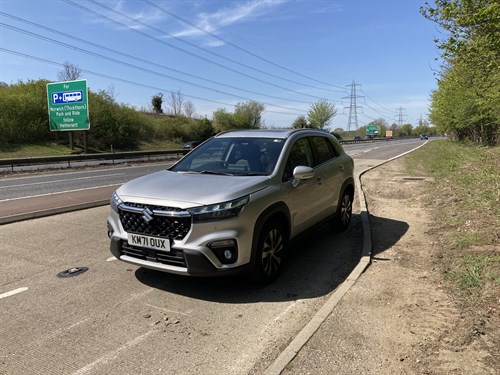
Another important feature on a motorway is good smartphone connectivity, allowing me to enjoy my choice of music and podcasts easily to help pass the time while travelling, and the S-Cross makes this easy with Apple Carplay connectivity (Android Auto is also included for those who need it). Now, you might be thinking that's nothing special as the vast majority of cars come with Carplay these days, and that is true. However, in practice some cars integrate it more seamlessly than others, and I've found with other test cars you often have to unlock your phone after plugging in before it'll work, which is annoying and sometimes unpredictable. With the S-Cross however, the system is faultless - just plug the phone in and it fires up seamlessly every time with no extra faffing around ever needed. With our Ultra grade test car, this system also works wirelessly if you want it to - plugging in is purely my personal preference.
As for overall comfort, the S-Cross performs reasonably well. It's no limo, but ride quality is decent, as is the comfort offered by the leather seats to go along with their high-end appearance.
Not forgetting the dual-zone climate control, which thankfully, with easy-to-use physical knobs and buttons, is also a welcome feature.
2nd Report: Location, location, location
When we take on long-term test cars, the basic idea is that we get to find out what they are like away from the road testing environment, dealing with more everyday life tasks. Therefore, the fact I moved house a week after taking delivery of the S-Cross seemed like ideal timing.
From that intro, you might expect this report to be all about practicality, and I can discuss it a bit, since the S-Cross was pressed into service to carry some items that didn't go in the moving van. The model's 430 litre boot is both usefully spacious and well thought-out, and by moving the adjustable boot floor to its lower setting I was able to trade a flat loading lip for the maximum available space. Moving the floor in this way doesn't affect the small divided-off areas either side of the boot either, allowing these to carry small or fragile items and protecting them from the risk of being crushed by larger items in the main load. I didn't need to fold the rear seats down on this occasion, but if I had needed to do this it's a straightforward 60/40 arrangement, although there's no handy remote fold switch by the tailgate like you get in some SUVs and estates, such as Suzuki's own Swace.
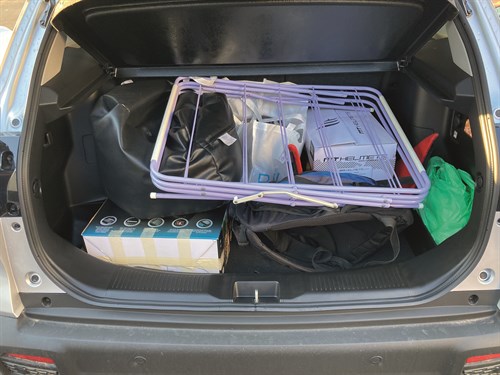
There's also an old-school rigid parcel shelf to grapple with if necessary, rather than a retractable roller arrangement. The S-Cross does however feature two-position rear-seat reclining, meaning if just a smidge of extra boot space is needed they can be popped further upright, at the possible slight expense of comfort for any rear seat passengers.
So, what other elements of a house move play into a long-term report besides the boot? Well, much of the moving experience is not the move itself, but all the little errands and shopping trips around town in the days that follow as a new home gets properly set up. And on that front, I have to report that the S-Cross has been surprisingly joyful to use. Its manner almost puts me in mind of an old Italian supermini - it's not what you'd call a sporty handler, and can roll a bit in corners, but for a family SUV it feels nippy, willing and agile, and more eager than I'd expected at whizzing around industrial estates and supermarket car parks, with the 48V mild hybrid system helping to assist the petrol engine when accelerating. And of course, once you get there, that boot comes into play again to ensure there's plenty of space for your shopping.
One other issue I've had with the S-Cross is possibly not its fault at all, but mine. I've found myself stalling the engine quite regularly, particularly when reversing into uphill parking spaces. It could be that I'm just used to driving my own more powerful manual car and am letting the revs drop too much, but it's not something I've really noticed with other test cars, so I'll be interested to see if I can overcome the problem with more experience of the Suzuki as the test goes on, or if it persists as an annoyance
1st Report: Crossover appeal
If one was asked to make a list of car brands with a strong heritage in SUVs, dating from before the explosion in road-biased family car models over the past decade or so, it would be easy to come up with the likes of Land Rover and Jeep. But don't forget about Suzuki. The Japanese manufacturer has been making SUVs since the 1970s, meaning that unlike other manufacturers who have recently jumped on the bandwagon, the brand has a strong heritage in the market, including a big track record in four-wheel drive and therefore proper off-road ability. Top Gear fans may remember a second-hand example being driven across the Amazon rainforest alongside a Range Rover and Toyota Land Cruiser.
Now, don't be confused into thinking the S-Cross, the latest member of our long-term fleet, is the brand's latest full-blown mud plugger - it's very much of the modern family SUV mould. But unlike many of its contemporaries, the S-Cross - the second generation of the model, introduced earlier this year - does retain four-wheel drive availability, meaning there's a bit of substance to go with the chunky styling.
One thing Suzuki certainly can't be accused of is overburdening S-Cross customers with choice. Only one engine is available, a 1.4L, 129hp petrol mild hybrid, and there are only two basic equipment grade and drivetrain combinations - the lower-spec Motion grade comes with front-wheel drive, while the higher-spec Ultra grade specced with our test car gets the aforementioned four-wheel drive system (both also come with a choice of manual or automatic transmission - we have the former).
As well as four-wheel drive, Ultra spec comes with an impressive looking list of standard equipment. Highlights include a 360° camera system, which as well as helping with parking also provides a sweeping look around the vehicle when the ignition is turned on, which while primarily a safety feature also lends a bit of a sense of theatre to proceedings. Other safety systems include blind spot monitoring, lane departure warning and prevention, and rear cross traffic alert. Adaptive cruise control is also standard, while the interior benefits from features such as leather seats and a 9in touchscreen. The only notable omission compared with rivals is a digital instrument cluster, though you do get a fun video game-style live mpg bar on the 4.2in LCD info panel as compensation. Metallic paint is the only option specced, and indeed the only one available.
All in all, it seems like the S-Cross will be a good tool to use for my next six months of motoring, and I'm looking forward to it. There is one note of concern, however. While four-wheel drive is an advantage in off-road or low-traction situations, it does normally have a negative effect on fuel consumption - a major concern for fleets at the best of times, and with prices rising daily at the time of writing, now so more than ever. I'll therefore be very interested to see what sort of real-world mpg figures I record as the miles rack up.











